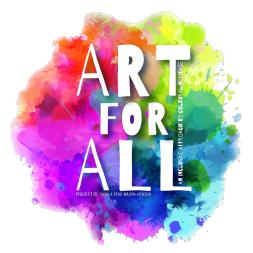During the training in Sofia, we introduced the participants to part of our cultural heritage.
The “Gotse Delchev” museum
The beginning of the museum work was set first in 1947 by the members of the historical circle “Nikopolis ad Nestum”. Later in 1979 the museum located in Gotse Delchev, Bulgaria was officially opened for visitors. It is a regional center for research, preservation and protection of the cultural heritage of the city and the municipalities of Gotse Delchev, Hadjidimovo, Garmen and Satovcha.
The exhibitions take place in a house built in 1877 by Bulgarian builders, for the merchant Yancho Chorbadji, in the baroque style. Specific things about this building are the wood-carved doors and ceilings. The museum has twelve exhibition halls, a lapidarium and a yard with an authentic fountain. A marble staircase with beautiful railings is leading to the house, which ends with a semicircular step in front of a massive door made out of wrought iron. In the beginning of the twentieth century the second owner of the building Prokop Prokopov got the southern facade of the building, as well as the columns and ceilings of the hall and the rooms on the second floor decorated with floral and geometric ornaments. After the Balkan wars (1912-1913) in the building was located the police department and later during 1944 the District Department of the Ministry of Interior.
The museum is divided by two departments: department of archeology and department of ethnography.
The archeological exposition presents a Thracian chariot, Thracian pottery, numismatic collection, marble statues and fragments from the Roman town of Nikopolis ad Nestum. The Prehistory section of this department presents fragments of ceramic vessels and cult tables, a bronze axe and urns. The exposition presents. Figures of a bear and a horse related to the cult of the family, three Thracian swords, ceramic vessels and photos of the only helmet found in Bulgaria, made of iron.
Researches show that the helmet is assembled from different parts: prochelnik (the part that goes on the forehead), upper part, natilnik (the part that goes on the back of the head) and two nabuznika (the parts that go on the cheeks). The nabuzniks have holes for the nose, mouth and eyes. They are decorated with plastic images, similar to beards and mustaches. On the inside of the helmet were found sticky traces of sheepskin (a separate hat, which protected the head from direct contact with the metal). The shape of the Thracian helmet comes from a hat called a kauziya, the tip of which curves forward.
The Thracian culture presents votive tiles of the Thracian horseman - god Asclepius, statues of other gods and Thracian chariot. The early Christian culture is represented by mosaics of basilicas, altars and architecture details with crosses.
The Rome and late antiquity exposition is represented by photos of the fortress walls of Momina kula and the tower near Delchevo.
The Middle ages exposition presents tools and Slavic-Bulgarian ceramics.
The exhibition about the history of the Bulgarian lands is presented by the traditional crafts, products from the everyday life, old books, that are related to the church and the struggle for an independent Bulgarian church, and textbooks. There are also stamps, photos of Bulgarian volunteers and an original volunteer flag.
Southwestern folklore and ethnographic region is one of the five folklore-etnography regions in Bulgaria. It’s very specific and diverse.
All folk musical instruments are included in this region, but the most famous ones are Bulgarian drums and zurni.
Women’s folk costumes consist of 7 elements. A shamiya, that is red or yellow with flowers on it. A breastplate, which is also colorful. A preskutnik, that is made of wool and different ornaments, bordered with threads. A podprezkutnik, that goes under the apron. A shirt, that is made of cotton. Socks called kalcune, that are knitted on five needles.
During the Renaissance Gotse Delchev is the only city in Bulgaria, that makes vats. The small vats are worn by the sheep and the lambs, while the big vats are worn by the rams and the goats. The biggest vats are around three to four kilograms.
The weaving in this region is really popular. All of the folk costumes are made by weaving. Rugs and mats are also made by weaving.
Ceramics was used for making vessels and pipes.
Mutafchiystvo was used for the making things out of fur.
Abadjiystvo was used for making cloth products.
Goldsmithing was used for making bracelets, pafti and necklaces.
This is considered the prettiest building in the whole town. The historical museum “Gotse Delchev” is one of the one hundred national tourist sites since January 2013.










